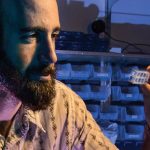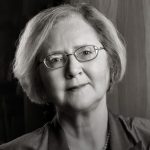Cellular damage control system helps plants tough it out
The command center of the cell, the nucleus, occasionally sends out signals to destroy all of the 50-100 chloroplasts in the cell, such as in autumn when leaves turn brown and drop off.
New research from Joanne Chory’s lab, published in Science on October 23, 2015, reveals details into a fundamental mechanism of how plants manage their energy intake. This new mechanism could potentially be harnessed to improve crop yield.
Plants have cellular organelles akin to tiny solar panels in each leaf. These microscopic structures, called chloroplasts, convert sunlight into chemical energy to enable the plant to grow. The command center of the cell, the nucleus, occasionally sends out signals to destroy all of the 50- 100 chloroplasts in the cell, such as in autumn when leaves turn brown and drop off. However, the Salk team found out how the plant nucleus begins to degrade and reuse the materials of select, malfunctioning chloroplasts—a mechanism that had been suspected but never shown until now.
The team found that the cells in the Arabidopsis plant marked damaged chloroplasts for degradation with a protein tag called ubiquitin, which is used in organisms from yeast to humans to modify the function of a protein. Under closer investigation, the team observed that a protein called PUB4 was initiating the tagging.
While PUB4 had been tied to cell death in other work, the Salk team showed that this protein starts the degradation of chloroplasts by placing ubiquitin tags to mark the organelle for cellular recycling. Uncovering biological mechanisms such as these leads researchers a step closer to controlling chloroplasts and designing crops that are more resistant to stressors.
Read News ReleaseAs seen in

Featured Stories
 Frontiers in Regenerative MedicineWhen Juan Carlos Izpisua Belmonte and his team at Salk made global news headlines last fall for developing a technique for growing...
Frontiers in Regenerative MedicineWhen Juan Carlos Izpisua Belmonte and his team at Salk made global news headlines last fall for developing a technique for growing... Next Gen: Zachary KatzZachary Katz is a visual person: from insect-devouring plants to bustling cells, he strives to see what happens in nature. While growing up in Arizona and then Florida, Katz and his brother gathered...
Next Gen: Zachary KatzZachary Katz is a visual person: from insect-devouring plants to bustling cells, he strives to see what happens in nature. While growing up in Arizona and then Florida, Katz and his brother gathered... An Interview with Salk President Elizabeth BlackburnWhen Jonas Salk announced the discovery of the polio vaccine in 1955, Elizabeth Blackburn was six years old and busy collecting...
An Interview with Salk President Elizabeth BlackburnWhen Jonas Salk announced the discovery of the polio vaccine in 1955, Elizabeth Blackburn was six years old and busy collecting...




















































